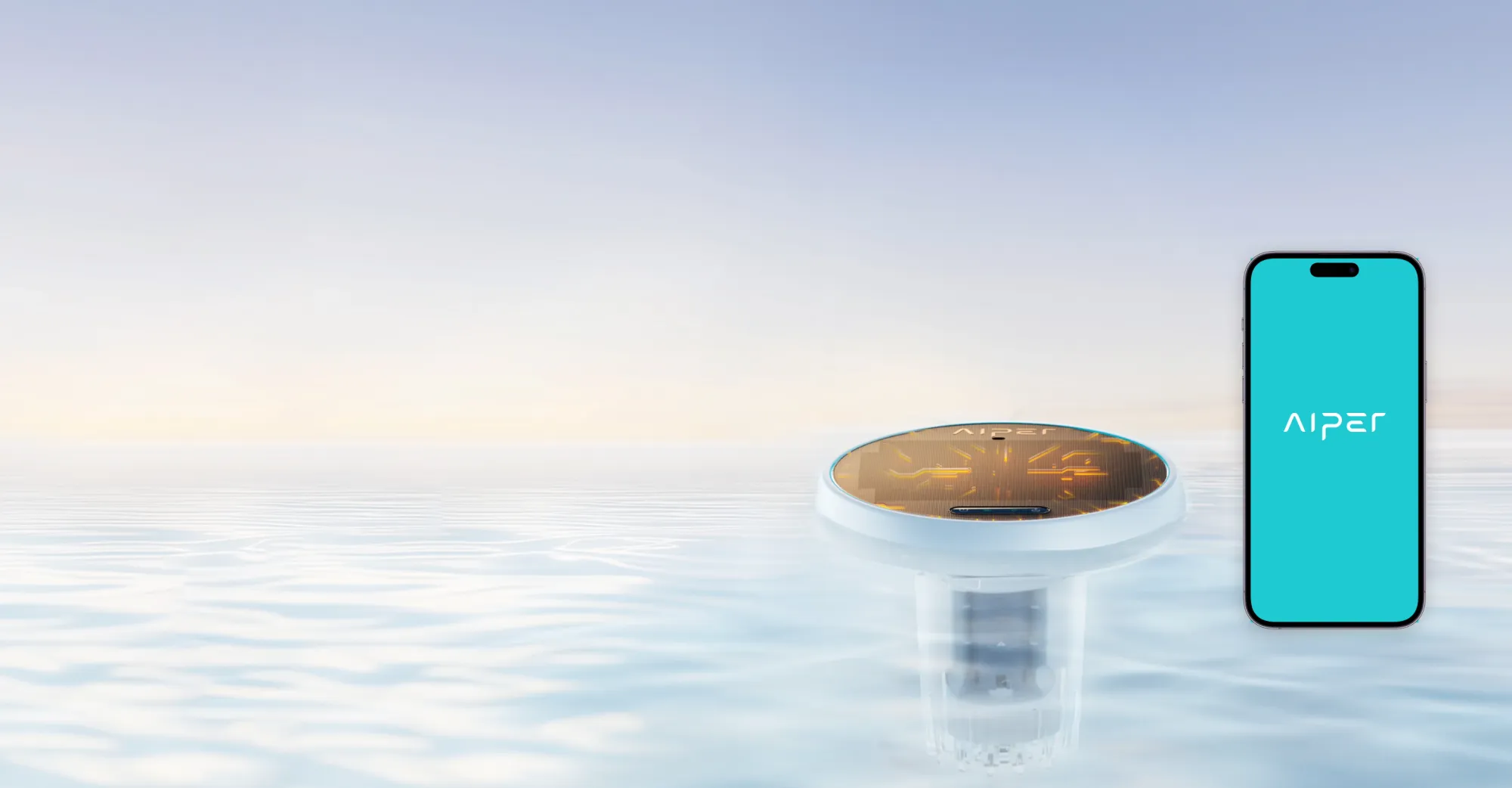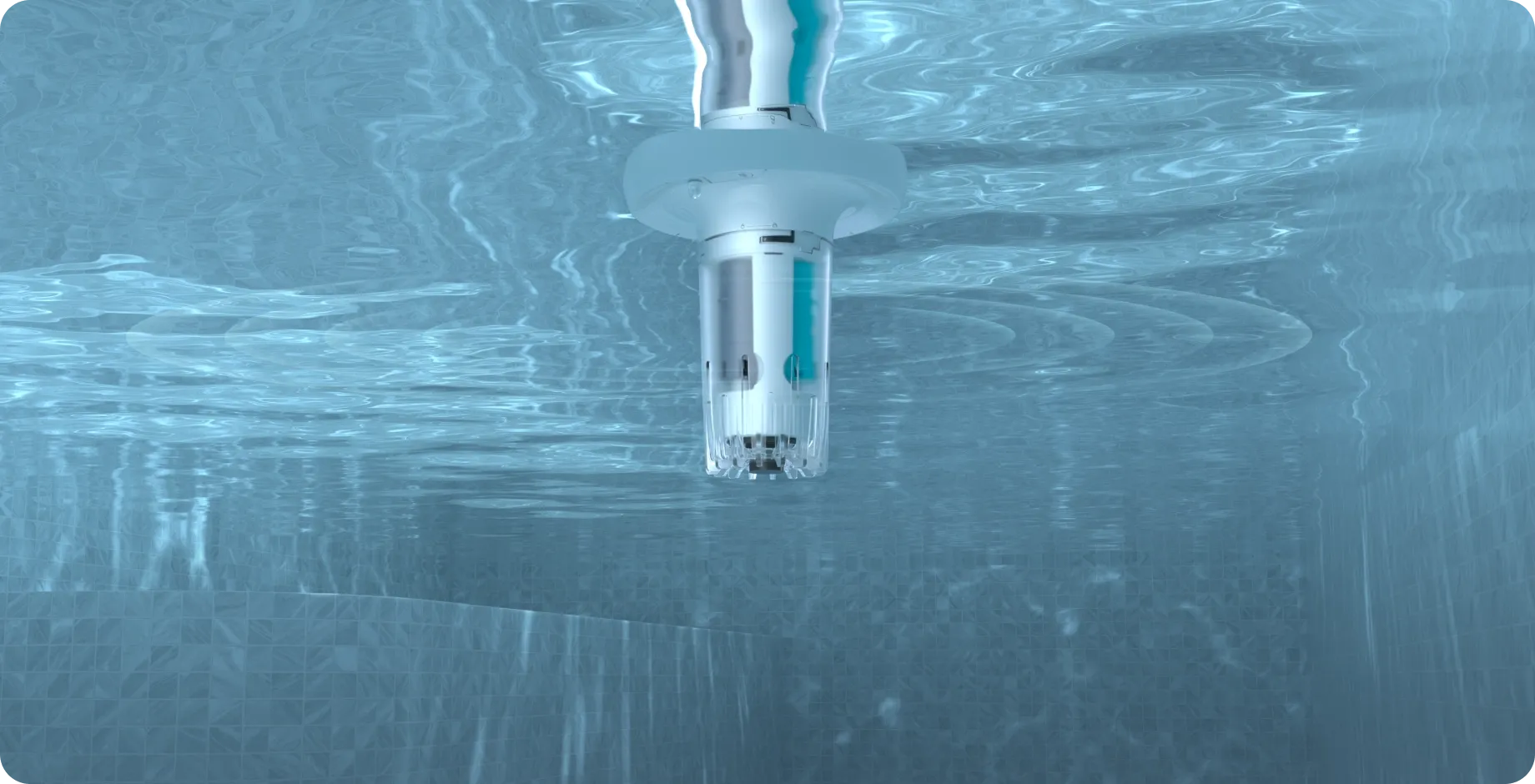The Best Way to Monitor Your Pool Water Quality

There’s nothing quite like having your pool: a place to unwind, cool off, and enjoy sunny afternoons with family and friends. But along with that refreshing escape comes the responsibility of keeping your pool water clean, safe, and crystal clear.
The best way to monitor pool water quality goes beyond a quick dip of a test strip. It requires regular testing, the right tools, and smart care to prevent health risks, equipment damage, and costly surprises. In this guide, you’ll learn practical tips and modern tools to make pool maintenance simple and stress-free.
Why Monitoring Pool Water Quality Is Essential
Monitoring your pool water quality isn't just about keeping it sparkling clean; it's crucial for the health and safety of swimmers and the longevity of your pool equipment. Unbalanced water, with improper pH, chlorine, or ORP levels, can lead to nasty issues like skin infections, respiratory problems, or unsightly algae growth. Nobody wants to swim in a murky, potentially harmful pool!
Beyond health concerns, poor water chemistry can silently damage your pool's infrastructure. Highly acidic or alkaline water corrodes vital components like pumps and heaters, leading to costly repairs and premature equipment failure. Imagine having to replace your pool heater years sooner than expected – that's a significant financial hit! On the flip side, properly balanced water not only looks inviting but also feels great, enhancing the swimming experience. Regular monitoring helps you catch and correct minor issues before they escalate, saving you a substantial amount of money on chemicals, repairs, and professional services. It's like a homeowner noticing cloudy water or skin irritation after a swim – early warning signs that your pool needs attention to prevent bigger problems down the line.
Key Parameters to Monitor in Pool Water
If you're serious about water quality, knowing what to test is just as important as knowing why. These core parameters directly affect swimmer safety, water clarity, and the effectiveness of your pool's sanitation system. Reliable pool water testing methods help you stay ahead of issues.

pH Levels
For pools, the ideal pH range is slightly alkaline—between 7.2 and 7.8. If your pH drops below this range, the water becomes too acidic, which can corrode metal fixtures, degrade pool surfaces, and irritate swimmers’ eyes and skin. If the pH is too high, chlorine becomes less effective, reducing its ability to sanitize the water.
Chlorine Levels
Chlorine is the frontline defense against bacteria, viruses, and algae. It breaks down contaminants through oxidation and keeps the water safe. However, levels that exceed 3 parts per million (ppm) can cause dry skin, red eyes, and a strong chemical odor. Levels below 1 ppm may not provide enough sanitation, leaving swimmers vulnerable to waterborne illnesses.
Total Dissolved Solids (TDS)
TDS measures the concentration of all dissolved substances in your pool, including salts, minerals, metals, and organic matter. High TDS (typically above 1,500–2,000 ppm in freshwater pools) can make water appear cloudy, affect chemical balance, and reduce chlorine’s effectiveness. When TDS levels rise too high, diluting the water with fresh replacement is usually the best solution.
Oxidation-Reduction Potential (ORP)
ORP, measured in millivolts (mV), reflects the water’s ability to break down contaminants using oxidizers like chlorine or bromine. A good ORP reading (typically between 650–750 mV) indicates that your sanitizer is actively neutralizing harmful substances. ORP is a key feature in many smart pool monitoring systems because it gives a real-time indication of water sanitation strength.
Electrical Conductivity (EC)
EC measures how well your pool water conducts electricity. Higher conductivity suggests increased chemical or mineral content, often a result of heavy chemical use, hard water, or saltwater systems. EC is particularly useful in saltwater pools, where consistent salt levels are crucial for the chlorination process.
Temperature
While often overlooked, water temperature has a major impact on chemical behavior. Warmer water accelerates chlorine depletion and promotes algae growth, especially above 84°F (29°C). Cooler temperatures can slow chemical reactions, making sanitation less effective.
Tools and Methods for Monitoring Pool Water Quality
For years, pool owners relied on traditional methods to gauge water quality. Test strips offer a quick, affordable glance at basic parameters like pH and chlorine, but their accuracy can be inconsistent and prone to user error. Liquid test kits provide more precise readings, yet they are time-consuming, involve multiple reagents, and require careful handling. And while professional testing offers undeniable reliability, it’s often expensive and inconvenient for the regular monitoring a pool truly needs.
However, the landscape of pool care is rapidly evolving with the advent of modern smart monitoring devices. These innovations offer real-time data directly to your smartphone, providing unparalleled precision, convenience, and the ability to track historical trends. They even offer tailored chemical recommendations, taking the guesswork out of maintenance.
Take, for instance, the Aiper HydroComm Smart Pool Monitor. This remarkable 5-in-1 device continuously tracks vital parameters, including pH, ORP (Redox), EC, TDS (Salt Level), and temperature, with impressive ±0.2 pH accuracy. All this crucial data seamlessly syncs to the Aiper app, putting complete pool management at your fingertips. What's more, its solar-powered design ensures continuous operation, providing actionable advice to make pool care truly effortless
Tips for Maintaining Optimal Pool Water Quality
Monitoring is step one—maintenance is step two. Here’s how to stay ahead using these practical pool maintenance tips
- Test Consistently: Stick to a regular schedule for regular pool testing, ideally at the same time each day (like early morning) to ensure accurate, consistent results.
- Balance Carefully: Use test results to guide chemical adjustments. Avoid over-treating, as this can disrupt other levels.
- Clean Filters Regularly: Filters keep the system running. A dirty filter can mess with water clarity and circulation.
- Use a Robotic Pool Cleaner: Utilizing a robotic pool cleaner can help reduce manual labor and prevent debris from affecting water quality.
- Deep Clean Seasonally: After storms, parties, or long periods of use, give your pool a thorough scrub.
- Leverage Smart Tools: Real-time monitoring combined with automation reduces guesswork and saves time.
With these habits, pool care becomes less of a chore and more of a routine.
Conclusion
A clean, well-balanced pool doesn’t happen by chance is the result of consistent care and smart monitoring. The best way to monitor pool water quality is through regular testing, paired with modern tools that simplify the process. By combining accurate pool water testing tools with automated cleaning devices like robotic cleaners, you can protect your health, extend equipment life, and avoid expensive problems. Smart solutions make pool care more efficient and less time-consuming. Ready to dive into worry-free pool cleaning? Explore Aiper’s smart maintenance tools here.
